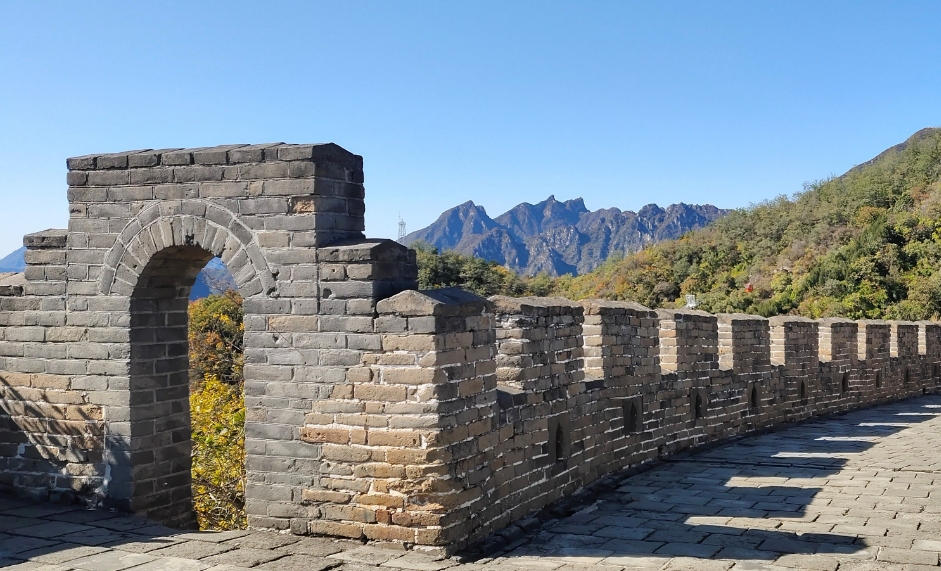
The Enduring Guardian: Why is the Mutianyu Great Wall So Significant?
The Great Wall of China, a UNESCO World Heritage Site, stands as a testament to human ingenuity and perseverance. While the entire structure is undeniably impressive, certain sections, like the Mutianyu Great Wall, hold particular historical and cultural significance. Here's why:
1. A Strategic Linchpin in the Ming Dynasty's Defense:
The Mutianyu section represents the pinnacle of Ming Dynasty Great Wall construction. Its strategic location, nestled amidst steep mountains and lush forests approximately 70 kilometers northeast of Beijing, was no accident. It served as a vital link in a powerful defensive chain, connecting the Gubeikou Great Wall in the east with the renowned Juyong Pass in the west. This strategic positioning effectively fortified the northern approaches to the capital city, safeguarding it from potential invaders for centuries.
2. Architectural Prowess and Military Ingenuity:
The Mutianyu section showcases the architectural prowess of the Ming Dynasty. Built using granite blocks, the wall here is exceptionally well-preserved, showcasing the craftsmanship of a bygone era. Its unique design further emphasizes its defensive purpose:
- Dense Watchtower Placement: Unlike other sections, Mutianyu boasts a high concentration of watchtowers, with 22 strategically placed along its relatively short 2.25-kilometer stretch. This density allowed for enhanced surveillance and rapid signal transmission using smoke and fire, vital for coordinating defenses against approaching enemies.
- Double-Sided Wall for Enhanced Defense: A unique characteristic of the Mutianyu section is its double-sided construction. Both the inner and outer faces of the wall are fortified with battlements, allowing defenders to effectively repel attacks from either direction. This design reflects the volatile nature of the region and the constant threat of invasion.
3. A Gateway to History and Natural Beauty:
Today, the Mutianyu Great Wall is more than just a historical relic; it is a vibrant destination offering visitors a glimpse into China's past and a communion with nature.
- A Journey Through Time: Walking along the wall, one can almost hear the echoes of soldiers' footsteps and imagine the fierce battles that unfolded centuries ago. The meticulously restored watchtowers provide vantage points offering breathtaking panoramic views, allowing visitors to fully appreciate the wall's grandeur and strategic brilliance.
- An Immersion in Nature: The Mutianyu section is renowned for its picturesque surroundings. The wall snakes its way through verdant forests and rugged mountains, creating a stunning tapestry of colors, especially during the fall when the foliage transforms into fiery hues. Cable cars provide a comfortable ascent, offering visitors breathtaking aerial views of the wall snaking through the landscape.
The Mutianyu Great Wall stands as a testament to China's enduring spirit, architectural ingenuity, and strategic brilliance. It serves as a poignant reminder of the past, a celebration of cultural heritage, and a beacon attracting visitors worldwide to experience its timeless allure.
Q&A
1. What makes the Mutianyu section different from other parts of the Great Wall?
The Mutianyu section distinguishes itself through its dense watchtower concentration, unique double-sided structure for enhanced defense, and stunning natural scenery.
2. Why was the Mutianyu Great Wall built?
It was built during the Ming Dynasty as a crucial component of their northern defense strategy. Its purpose was to protect the capital city from potential invasions.
3. What can visitors experience at the Mutianyu Great Wall today?
Visitors can experience a journey through history by exploring the well-preserved wall and watchtowers. They can enjoy breathtaking views of the surrounding landscape, immerse themselves in the surrounding natural beauty, and gain a deeper appreciation for China's cultural heritage.